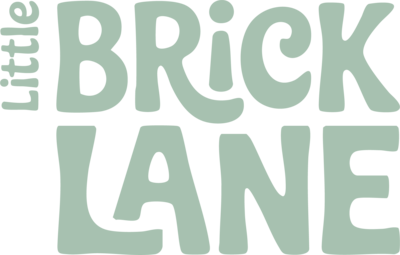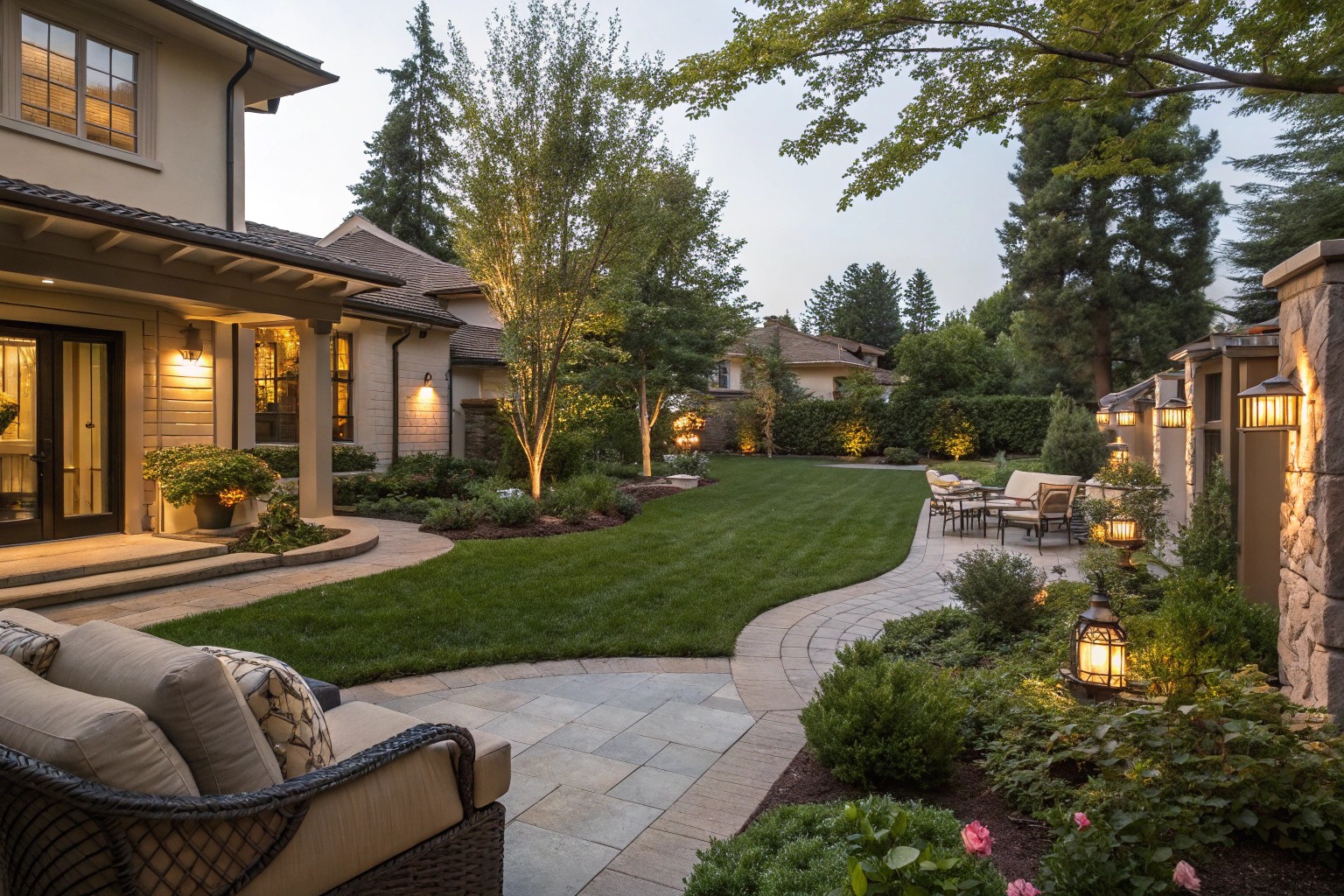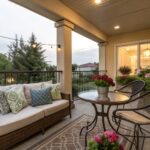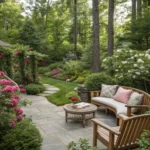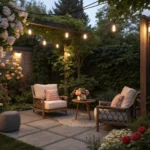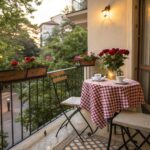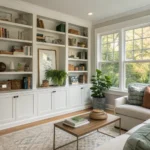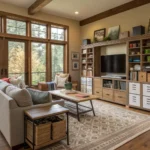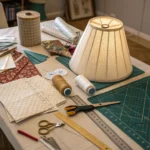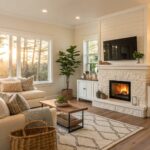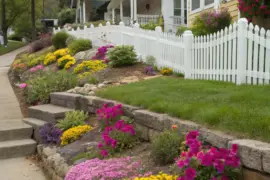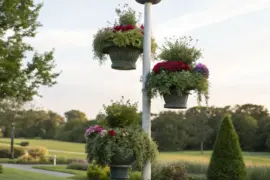While string lights have become the default choice for outdoor ambiance, the world of landscape lighting offers countless alternatives that can transform your outdoor spaces into sophisticated retreats. From dramatic uplighting that showcases architectural features to subtle downlighting that mimics natural moonlight, the right lighting strategy can elevate your property’s aesthetic appeal while enhancing safety and functionality.
Understanding the Fundamentals of Outdoor Lighting Design

The Three-Layer Lighting Approach
Professional landscape lighting relies on a layered approach that combines three distinct types of illumination to create depth and visual interest. This methodology ensures your outdoor spaces are both functional and beautiful throughout the evening hours.
Ambient Lighting
– Provides general illumination for safe navigation
– Creates the overall mood and atmosphere
– Often achieved through post lights, wall sconces, or overhead fixtures
Task Lighting
– Focuses on specific activity areas like outdoor kitchens or reading nooks
– Includes under-counter lights, adjustable spotlights, and pendant lights over dining tables
– Essential for outdoor entertaining and dining areas
Accent Lighting
– Highlights architectural features, garden elements, or landscape focal points
– Uses techniques like uplighting, downlighting, and grazing to create drama
– Transforms ordinary elements into captivating focal points
Color Temperature: The Science Behind Ambiance

Understanding color temperature is crucial for creating the right atmosphere in your outdoor spaces. Measured in Kelvin (K), color temperature determines whether light appears warm or cool, significantly impacting the overall feel of your environment.
| Color Temperature Range | Effect | Best Applications |
|---|---|---|
| 2,000K – 3,000K | Warm white, cozy atmosphere | Dining areas, lounging spaces, decorative lighting |
| 3,100K – 4,500K | Cool white, natural feel | Pathways, security lighting, task areas |
| 3,900K – 4,000K | Moonlight mimicry | Downlighting, water features, natural landscapes |
Architectural Lighting: Beyond Basic Illumination
Uplighting Techniques for Dramatic Impact
Uplighting creates striking visual effects by positioning fixtures at ground level and directing light upward toward trees, columns, or architectural features. This technique emphasizes height and creates dramatic shadows that add depth to your landscape.
Key Applications:
- Tree Illumination: Position well lights 2-3 feet from the trunk base, using narrow beam angles (10-15 degrees) for tall, slender trees
- Column Accent: Place small fixtures at the base of each column for a formal, polished appearance
- Wall Grazing: Utilize uplighting to emphasize texture in stone, brick, or stucco surfaces
I’ve found that well lights, which sit flush with the ground, provide the cleanest aesthetic while minimizing glare and preventing fixtures from becoming obstacles in the landscape.
Downlighting: The Art of Subtle Illumination
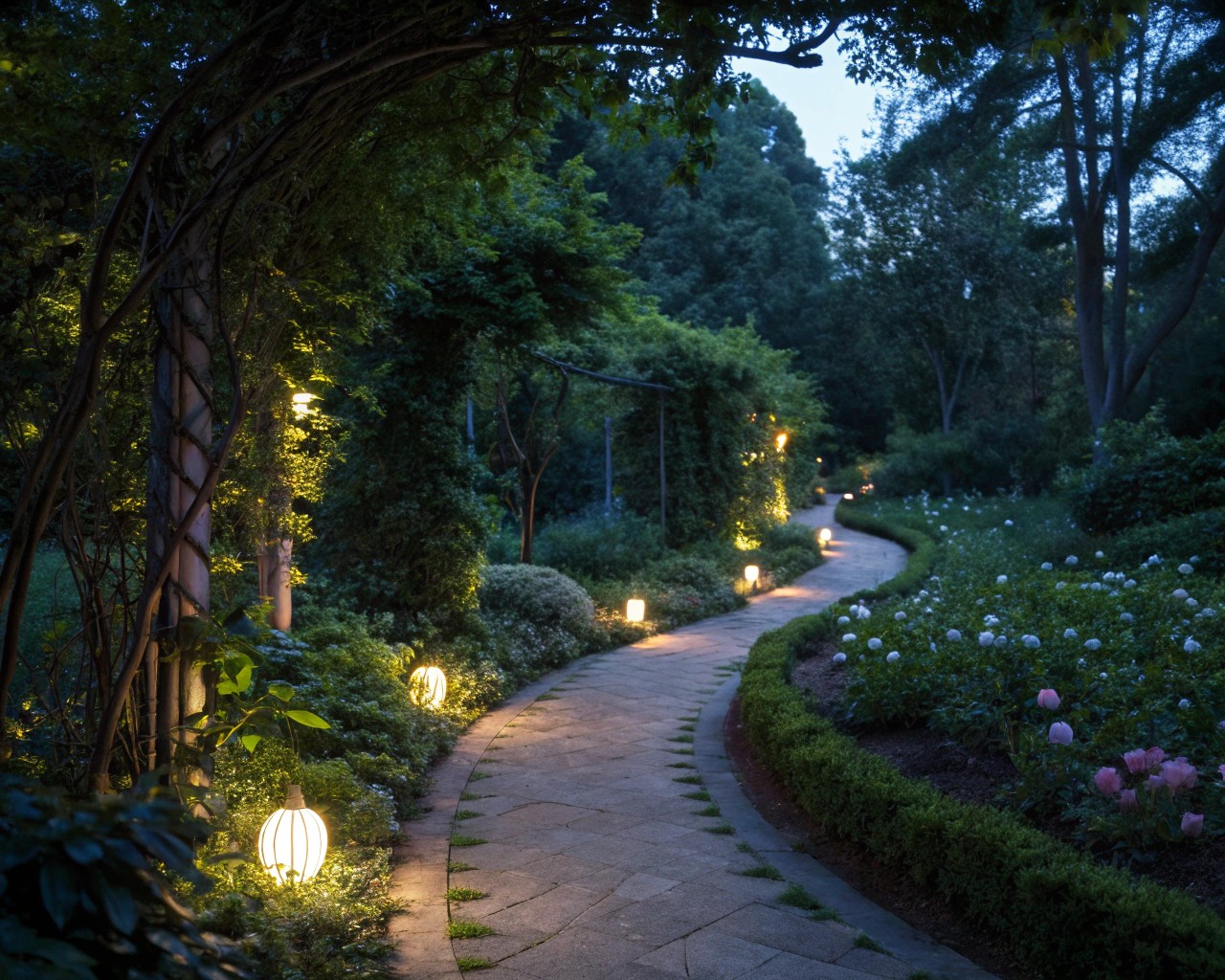
Downlighting, often called “moonlighting,” involves mounting fixtures above the target area and directing light downward. This technique creates soft, natural-looking illumination that closely mimics filtered moonlight through tree canopies.
Installation Strategy:
- Mount fixtures 8-12 feet high in trees or on structures
- Use wide beam angles (35-60 degrees) for general area coverage
- Position multiple fixtures to avoid harsh shadows and create even light distribution
Ideal Locations:
- Patios and seating areas for ambient lighting
- Pathways for safe navigation
- Water features to create silvery reflections
Specialty Lighting Solutions
Hardscape Integration
Modern hardscape lighting seamlessly integrates with stone, concrete, and masonry elements to provide both functionality and aesthetic appeal. These specialized fixtures are designed to withstand traffic and weather while delivering targeted illumination.
Professional Solutions:
- Ledge Lights: Compact fixtures that slide under caps and ledges for shadow-free illumination
- Step Lights: Deliver soft, targeted illumination without harsh glare, essential for safety
- In-Ground Lights: Sit flush with surfaces, providing clean uplighting for walls and columns
- Tape Lights: Flexible, waterproof strips perfect for highlighting edges and curves
Water Feature Illumination

Water features require specialized lighting approaches due to their reflective properties and the interplay between light and moving water. The goal is to enhance the water’s natural beauty while ensuring safety around the feature.
Submersible Lighting Considerations:
- Use only fully waterproof fixtures with proper sealing
- Consider fish-friendly lighting levels to avoid disrupting pond ecosystems
- Create shimmering effects with underwater placement
External Lighting Options:
- Downlighting: Mount fixtures in nearby trees to create golden or silvery sheens on water surfaces
- Spotlight Techniques: Use narrow beams for fountains and waterfalls, wider beams for larger water bodies
- Moonlight Globes: Perfect for larger fountains, providing subtle glow with moisture resistance
Creative Alternatives to String Lights
Pergola and Gazebo Lighting

Rather than relying solely on string lights, consider these sophisticated alternatives for covered outdoor structures:
Integrated LED Systems:
- LED strips built into pergola beams for modern, clean lines
- Adjustable spotlights nestled among rafters for flexible illumination
- Recessed fixtures in pergola ceilings for seamless integration
Pendant and Chandelier Options:
- Hanging outdoor chandeliers for dramatic focal points
- Grouped pendants at varying heights for visual interest
- Weather-resistant lanterns for traditional charm
Umbrella Alternatives
Transform your patio umbrella lighting beyond basic string attachments:
Battery-Operated Solutions:
- LED lamp-style lights attached to umbrella poles
- Adjustable brightness controls for mood setting
- Motion-activated options for energy efficiency
Integrated Systems:
- Umbrellas with built-in LED lighting in ribs
- Solar-powered options for sustainable operation
- Color-changing capabilities for special occasions
Wall-Mounted Solutions
Outdoor wall sconces offer sophisticated alternatives to strung lighting while providing excellent task and ambient illumination:
Modern Architectural Options:
- Cylinder-shaped downlight sconces for contemporary appeal
- Mid-century inspired designs with clean lines
- Adjustable beam angles for versatility
Traditional Styles:
- Lantern-style fixtures for classic appeal
- Carriage house designs for farmhouse aesthetics
- Vintage-inspired Edison bulb fixtures
Solar and Smart Lighting Integration
Solar Technology Applications

Solar lighting has evolved significantly, offering professional-grade solutions for various outdoor applications:
Pathway Solutions:
- High-quality solar stakes with 20-25 year LED lifespans
- In-ground and faux stone styles for design flexibility
- Flickering flame torches for dramatic accent lighting
Mood and Security Lighting:
- Solar string lights for ambient lighting without electrical connections
- Motion-activated floodlights for security applications
- Spotlights for landscape feature highlighting
Smart Controls and Automation
Modern outdoor lighting systems incorporate smart technology for enhanced functionality and energy efficiency:
Key Features:
- Schedule-based dimming for automatic operation
- Motion detection for security and energy savings
- Tunable white lighting to minimize ecological impact
- Remote access through smartphone applications
Energy Efficiency Benefits:
- LED technology uses 80% less energy than incandescent bulbs
- Smart sensors prevent unnecessary energy waste
- Programmable timers optimize usage patterns
Common Design Mistakes to Avoid
Understanding professional design principles helps prevent costly mistakes that diminish the effectiveness of your lighting investment:
Fixture Placement Errors
The Airport Runway Effect:
- Avoid placing fixtures in straight, symmetrical lines along pathways
- Space fixtures approximately 10 feet apart in staggered patterns
- Create pools of light rather than continuous illumination
Glare and Hot Spots:
- Never position lights at eye level where they cause direct glare
- Use fixtures with glare shields for spotlights and floodlights
- Position lights naturally to guide rather than blind
Technical Considerations
Beam Angle Selection:
- Use narrow beams (10 degrees) for tall, thin features
- Choose wide beams (35-60 degrees) for broader objects
- Match beam spread to the size and shape of the illuminated feature
Voltage and Safety:
- Ensure all fixtures are rated for outdoor use and specific weather conditions
- Use proper voltage ratings to prevent efficiency loss and safety hazards
- Invest in quality wiring and waterproof components
Seasonal Lighting Strategies
Adaptable Design Elements
Creating lighting schemes that work throughout the year requires thoughtful planning and flexible fixtures:
Spring and Summer Applications:
- Golden lights against green foliage for warm, inviting atmospheres
- Spotlight statues and garden features while plants develop
- Incorporate hanging fixtures at varying heights for layered interest
Fall and Winter Considerations:
- Adjust color temperatures to complement seasonal plant colors
- Use uplighting to highlight evergreen structure and winter interest plants
- Implement timer controls to accommodate changing daylight hours
Implementation Strategy
Planning Your Lighting Design
Before purchasing fixtures, develop a comprehensive lighting plan that addresses both aesthetic and functional needs:
- Assess Your Space: Document existing structures, plants, and topography
- Define Objectives: Identify areas requiring safety, security, or aesthetic lighting
- Consider Viewing Angles: Plan lighting from primary viewing locations like patios and windows
- Layer Your Approach: Combine ambient, task, and accent lighting for depth and functionality
Professional vs. DIY Considerations
While many lighting projects can be accomplished by homeowners, certain installations require professional expertise for safety and optimal results. Consider professional installation for:
- Low-voltage electrical connections
- Tree-mounted fixtures requiring climbing
- Complex smart control systems
- Hardscape integration requiring precise placement
By moving beyond string lights and embracing these diverse lighting techniques, you can create outdoor spaces that rival the sophistication of interior design while providing the functionality needed for safe, enjoyable outdoor living. The key lies in understanding the interplay between light and shadow, selecting appropriate fixtures for each application, and creating layered lighting schemes that enhance your property’s natural beauty throughout the seasons.
